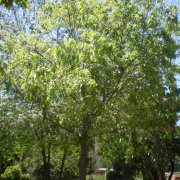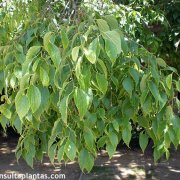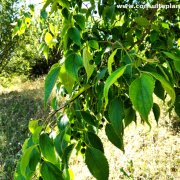Care of the tree Celtis australis or Mediterranean hackberry |
|
The genus Celtis, family Cannabaceae, includes 70 species of trees native to temperate zones on almost all continents. Some species are: Celtis australis, Celtis mississipensis, Celtis occidentalis, Celtis davidiana, Celtis tournefortii. Common names: European nettle tree, Mediterranean hackberry, Lote tree, Honeyberry. This species is native to Southern Europe, North Africa, and Asia Minor. They are deciduous trees with a wide and rounded crown that reach 25 meters (82 feet) in height. The lanceolate leaves are green on the upper surface and light on the underside. They produce small axillary flowers that give rise to edible spherical fruits. These fast-growing, long-lived trees (300-600 years) are used as shade trees. Wood is ideal for making tools (axes, picks, etc). Celtis australis needs full sun exposure or light shade if the sun is very strong in summer. The ideal soil has to be rich and fresh but they can grow in loose, sandy and stony soils (they grow less). Water moderately waiting for the soil to dry completely; they endure long droughts, except when they are young, which must be watered frequently with little amount of water. European nettle tree does not need pruning or fertilizers. Mediterranean hackberry is a tree resistant to the usual pests and diseases. Propagation by seeds is slow and long; it's faster to use cuttings from the suckers. |
Images of the tree Celtis australis or Mediterranean hackberry |
Find plants
Celtis australis or Mediterranean hackberry | Care and Growing
© 2026 FavThemes




